What 19th century American engineering landmark invites you through nature, past historic sites and into people’s backyards? Where can you experience the grandeur of the Hudson Valley in (mostly) secluded peace and tranquility — while learning something about Old New York?
Welcome to the Old Croton Aqueduct Trail, 26.5 miles of dusty pathway through some of the most interesting and beautiful towns and villages of Westchester County.
But this is more than a linear park. The trail runs atop — and sometimes alongside — the original Croton Aqueduct, a sloping water system which opened in 1842, inspired by ancient Roman technology which delivered fresh water to the growing metropolis over three dozen miles south.
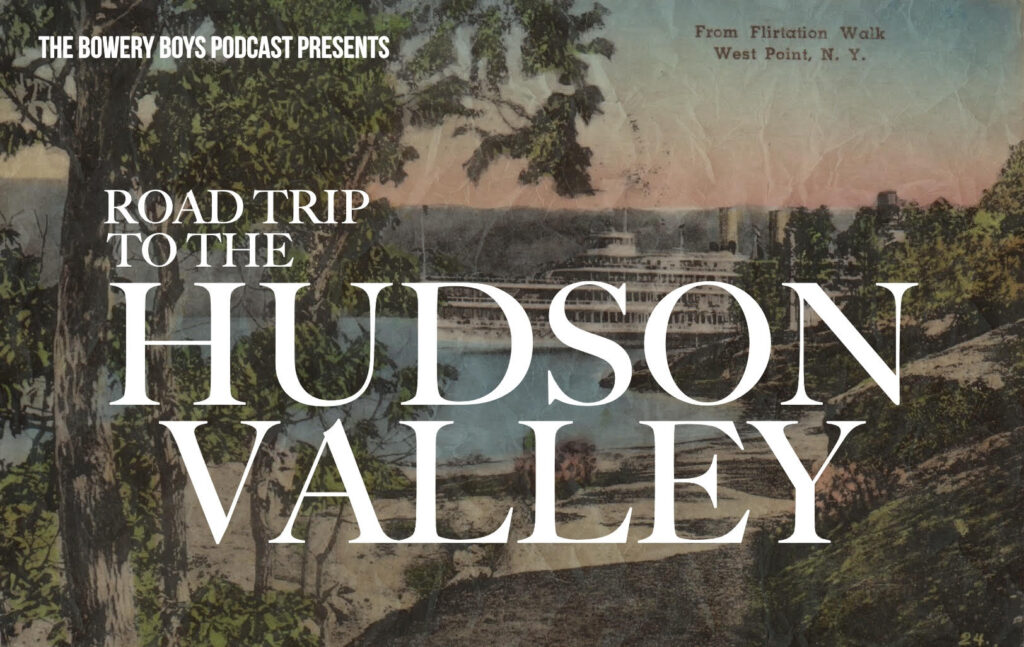
At its northern end sits the New Croton Dam — the tallest dam in the world when it was completed in 1906 — with its breathtaking, cascading spillway (a little Niagara Falls) and its classic steel arch bridge, providing visitors with a view into a still-active source of drinking water.
In the first part of this Road Trip to the Hudson Valley mini-series adventure, Greg and Tom not only trace the history of this colossal engineering project, they literally follow the aqueduct through the village of Westchester County (with some help from Tom Tarnowsky from Friends of the Old Croton Aqueduct).
WITH Nineteenth century ruins! Ancient bridges and weirs! Steep hikes and historic houses!
PLUS: How did this elaborate mechanism help revolutionize modern plumbing? And find out how portions of this 180 year old system are still used today to distribute fresh water.
LISTEN NOW: ON THE TRAIL OF THE OLD CROTON AQUEDUCT
A big thanks to Tom Tarnowsky and everybody involved with the Friends of the Old Croton Aqueduct. Visit their website for information about walking tours and special events. You can also visit the state’s website for the Old Croton Aqueduct Trail for more information and lots of great maps.
And here is Tom’s lecture for the Irvington Historical Society from 2021. Lots of fascinating information here:
An overview of the Old Croton Aqueduct on a map. And here’s an excellent map of the trail.
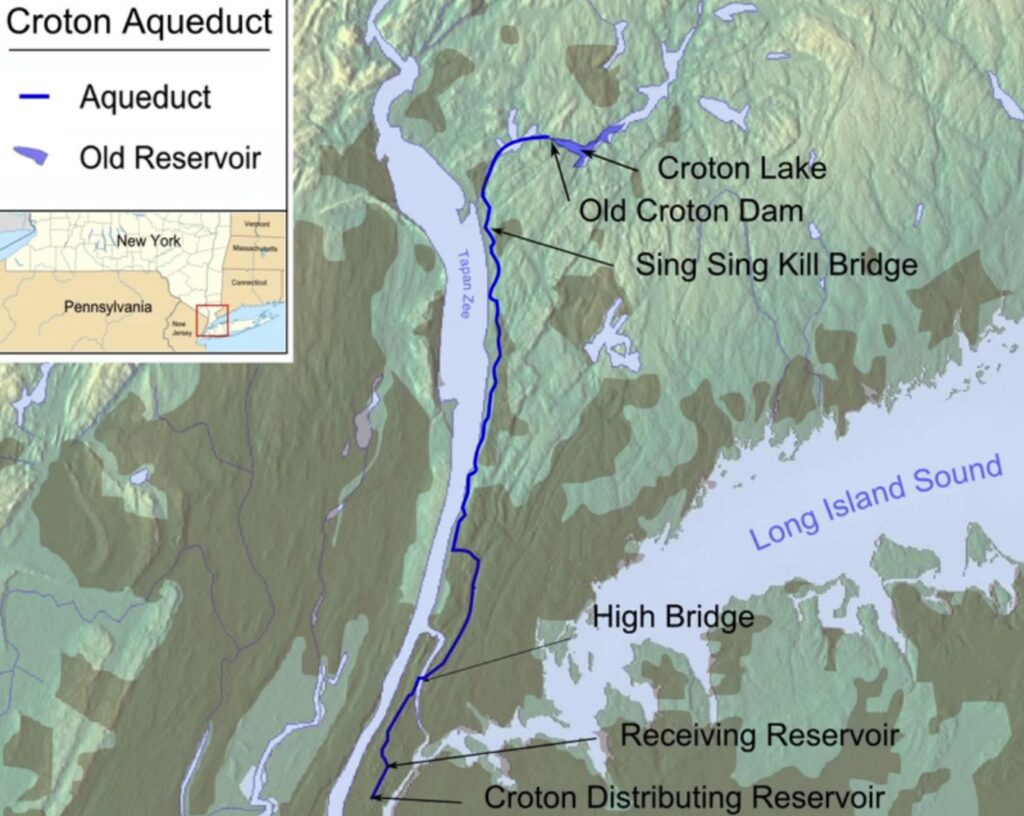
And where does New York City get all its water today?
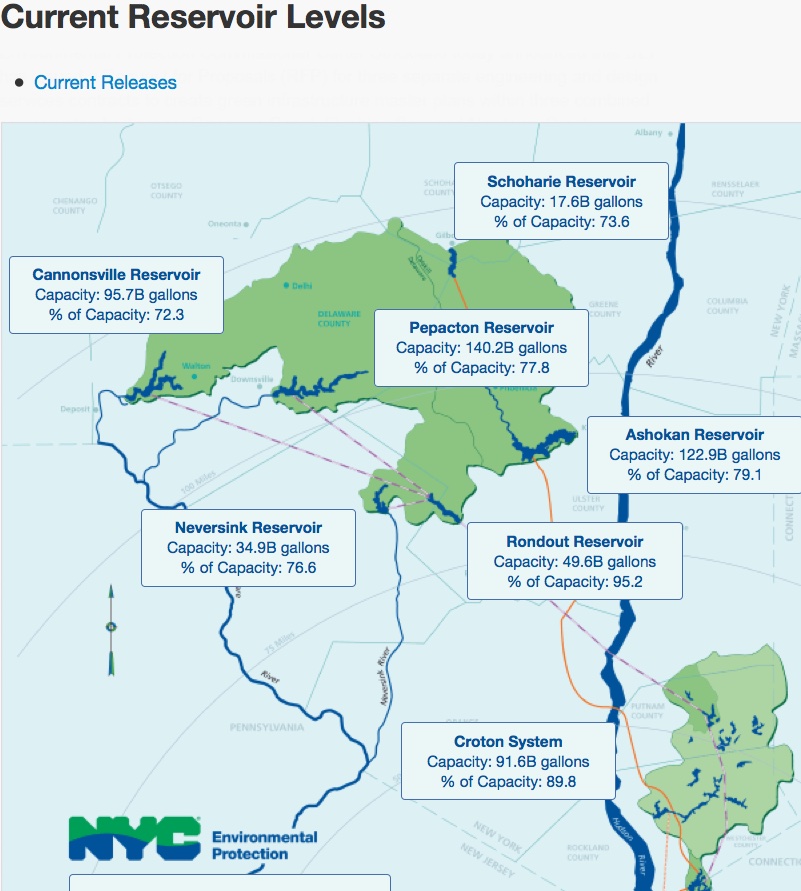
A view of the original Croton Dam, equipped with well dressed lads and ladies.
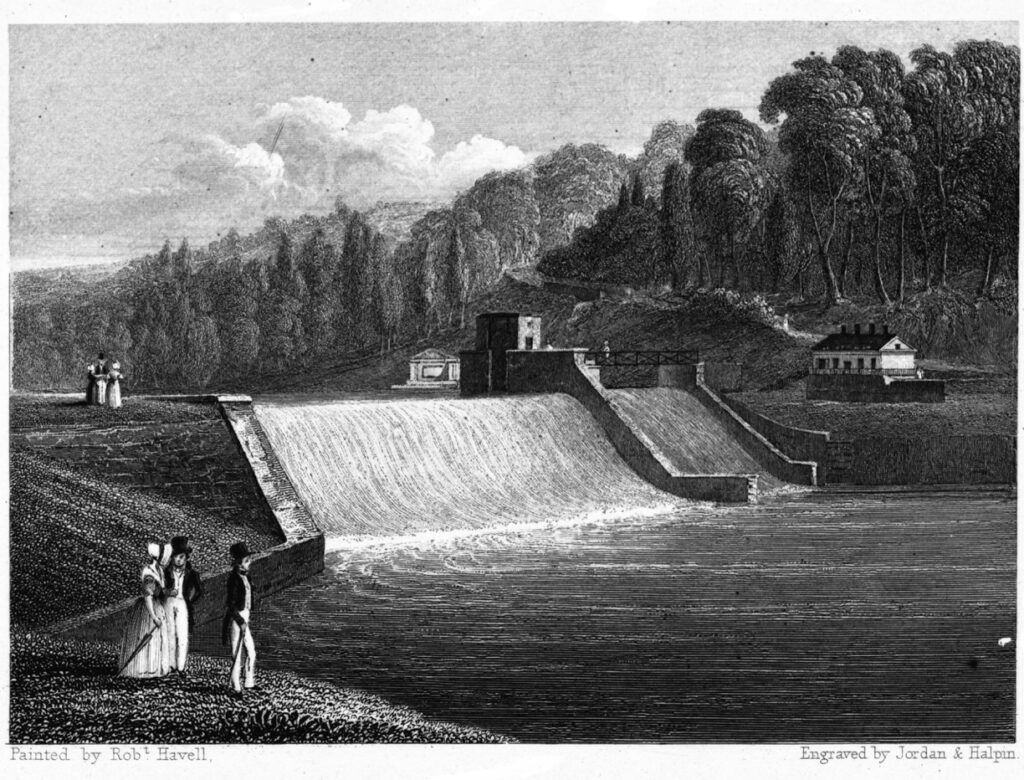
The current Old Croton Dam is submerged beneath the waters of the New Croton Dam. However, in 1955, water was drained from the reservoir and this picture was taken of the old dam.
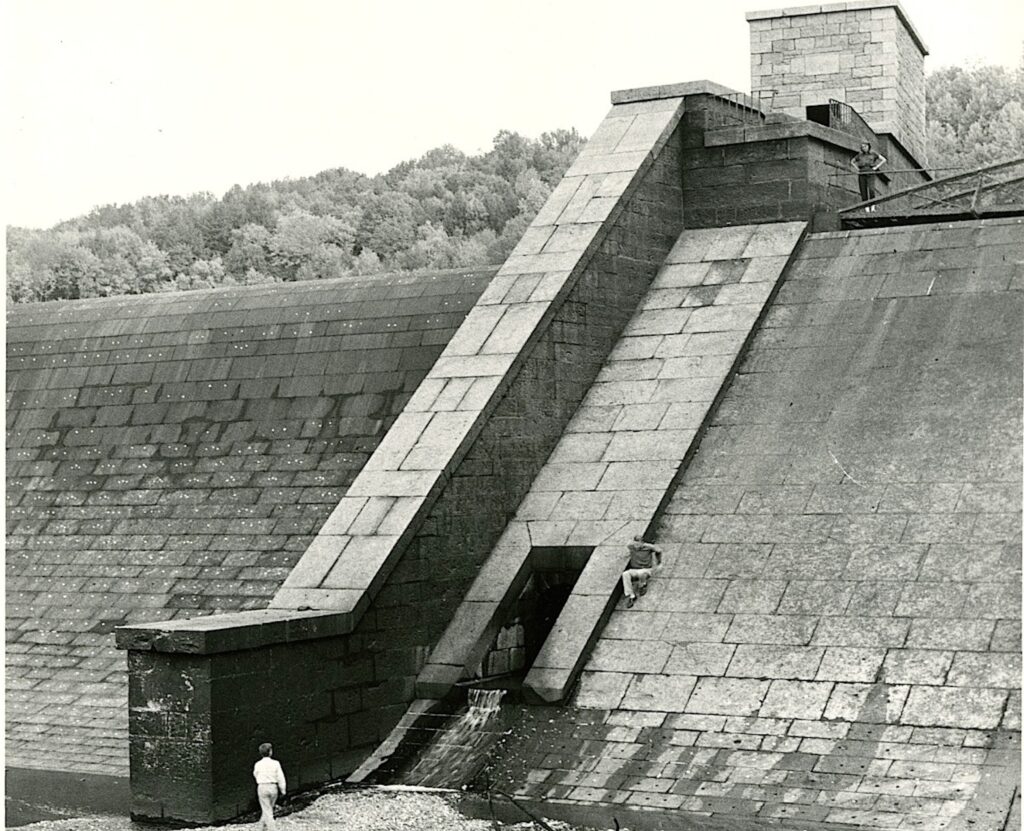
Much of the trail is actually atop a mound made over the aqueduct masonry.
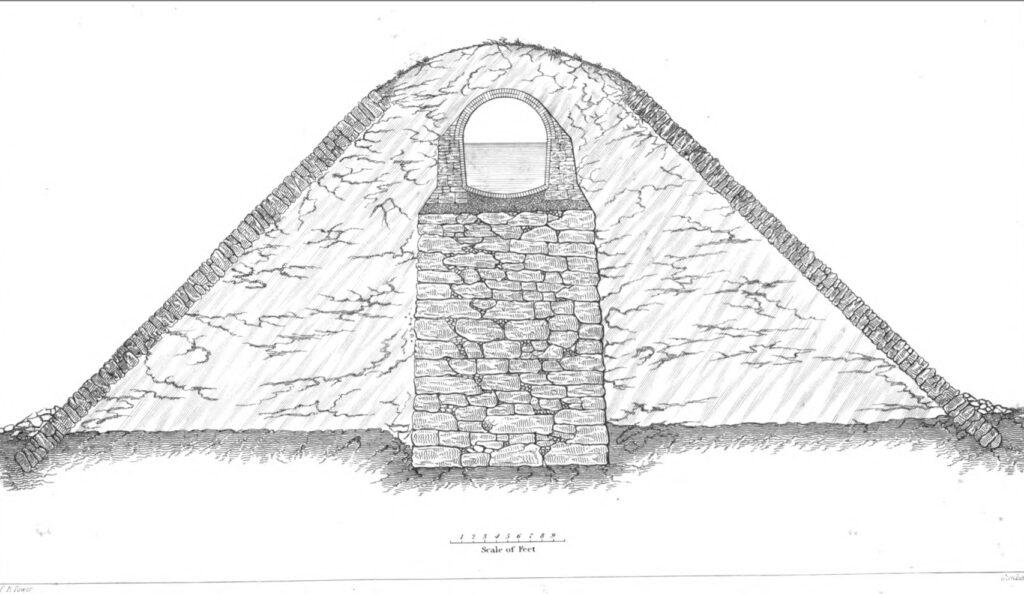
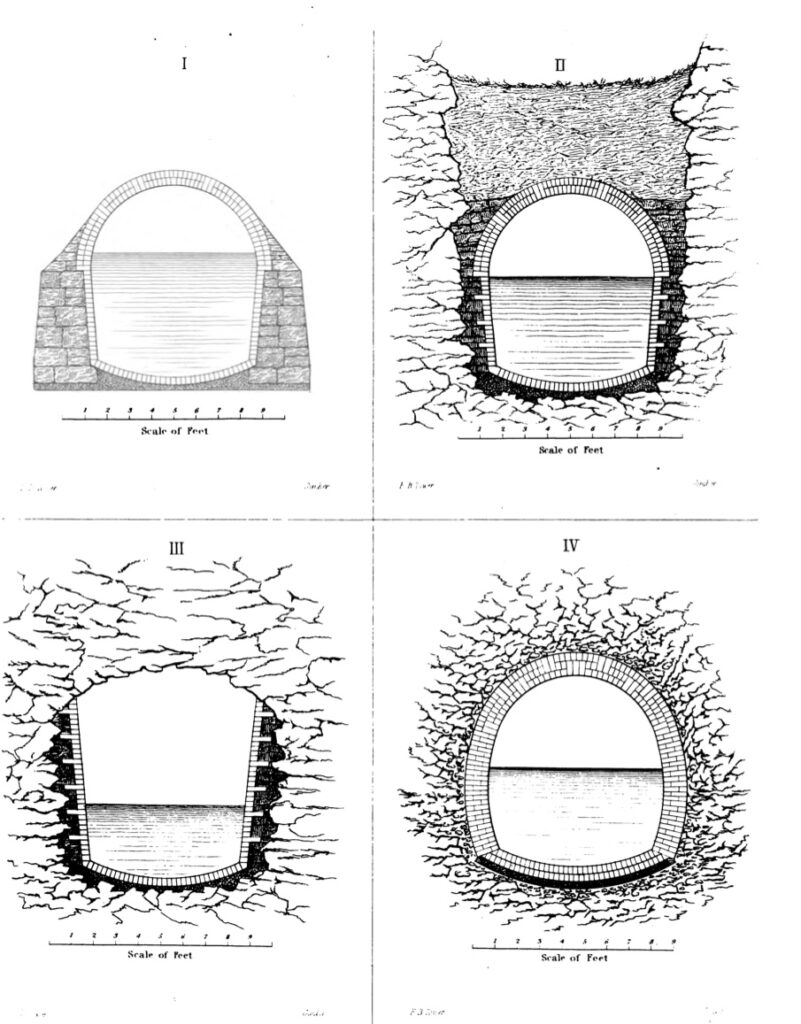
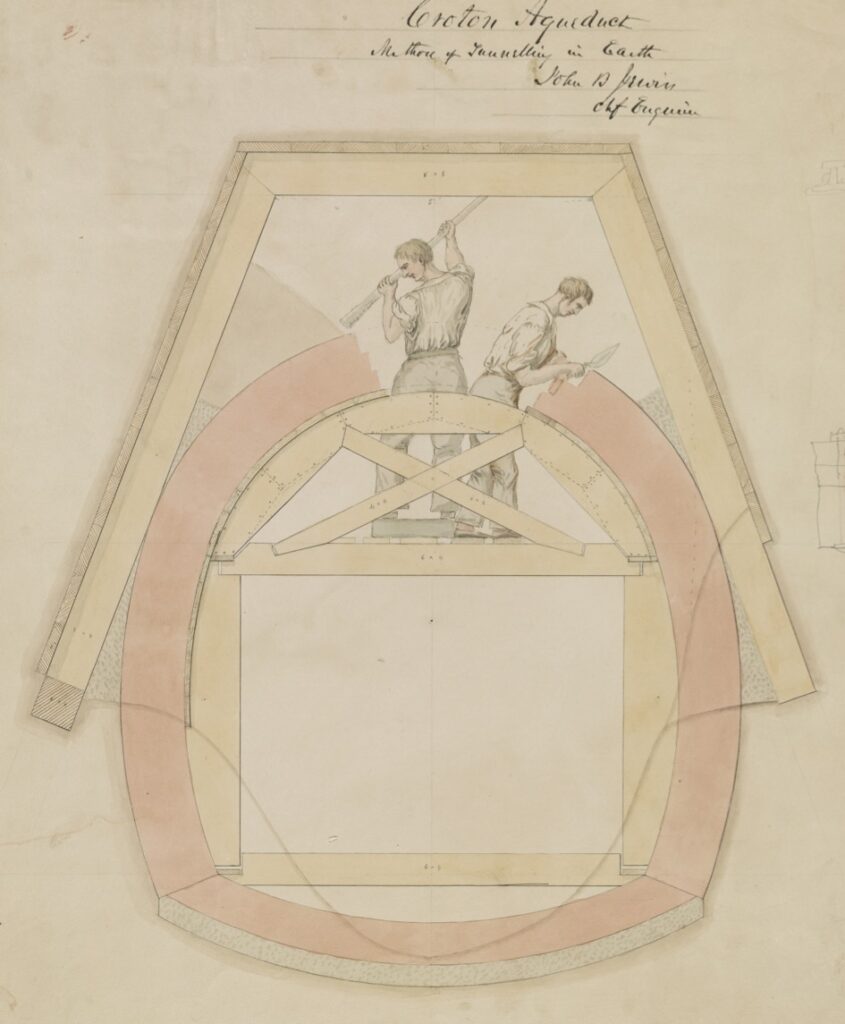
The aqueduct ventilators are the most recognizable features of the existing old aqueduct along the trail.
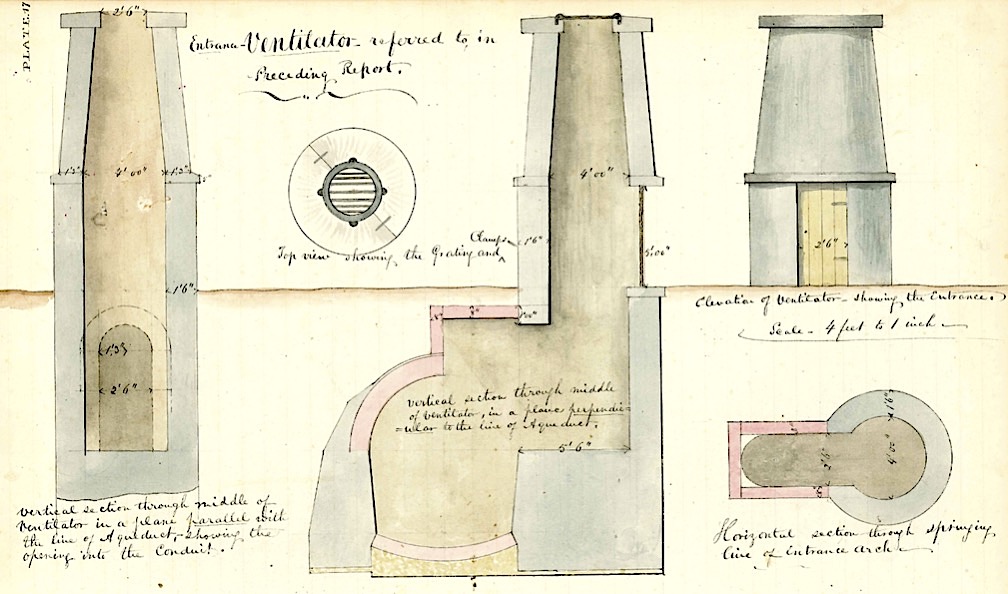
The Sing Sing/Ossining Double Arch Bridge
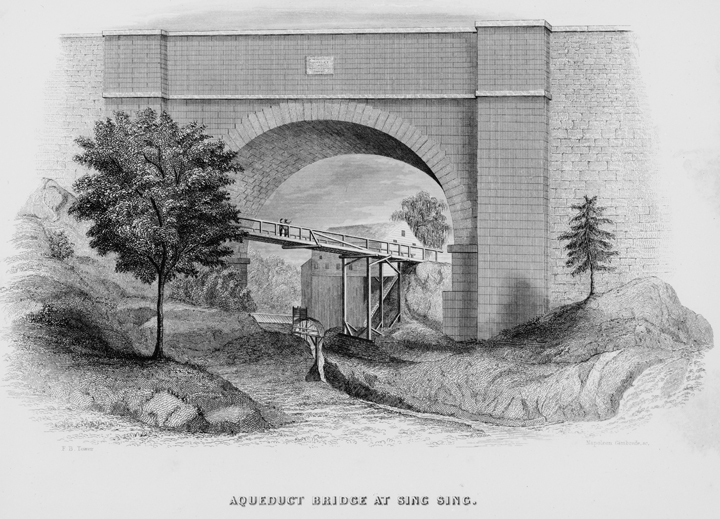
The High Bridge brought Croton water over the Harlem River and into New York.
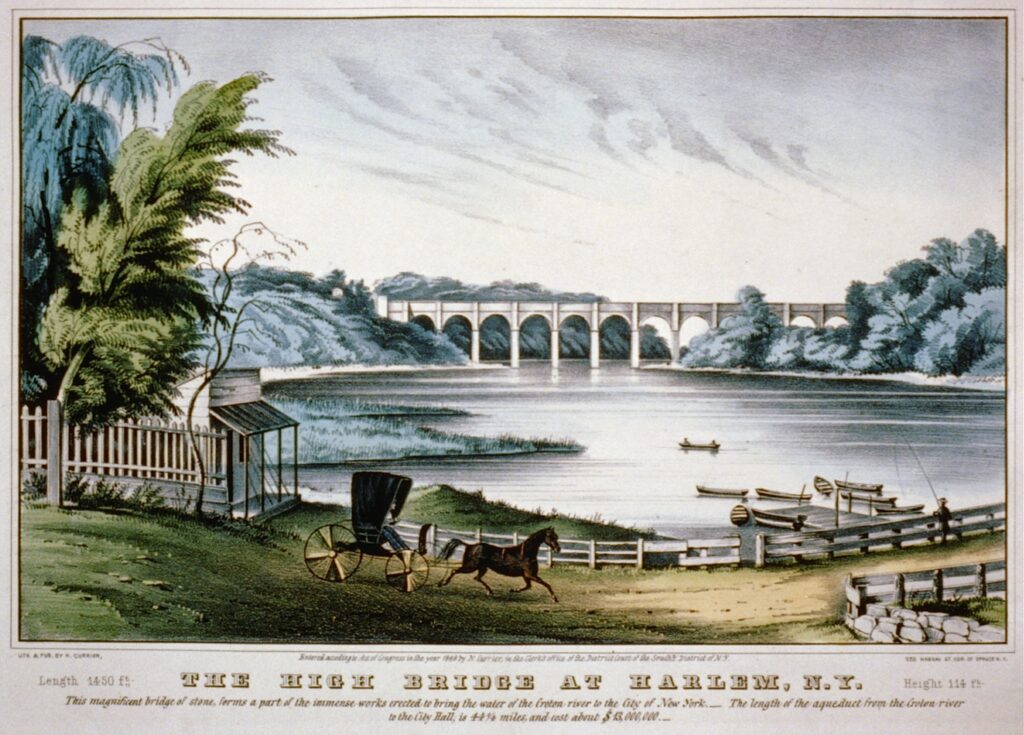
The New Croton Aqueduct, constructed in the late 19th century, would be considerably larger than the old. This 12-foot diameter section is waiting to be lowered into the aqueduct near to 149th Street and Convent Avenue circa 1888…..
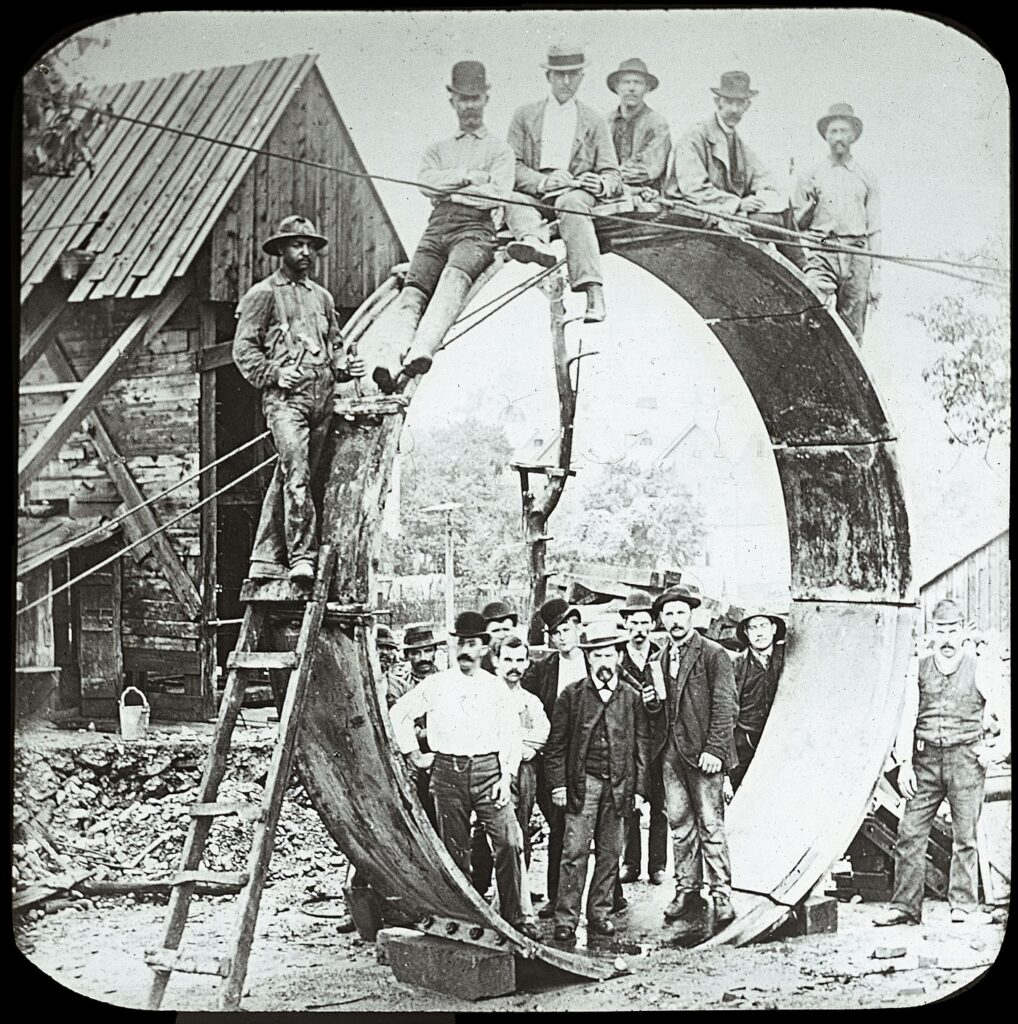
And then the system would get even bigger! Here’s an image of the Catskill aqueduct system which was completed in 1916.
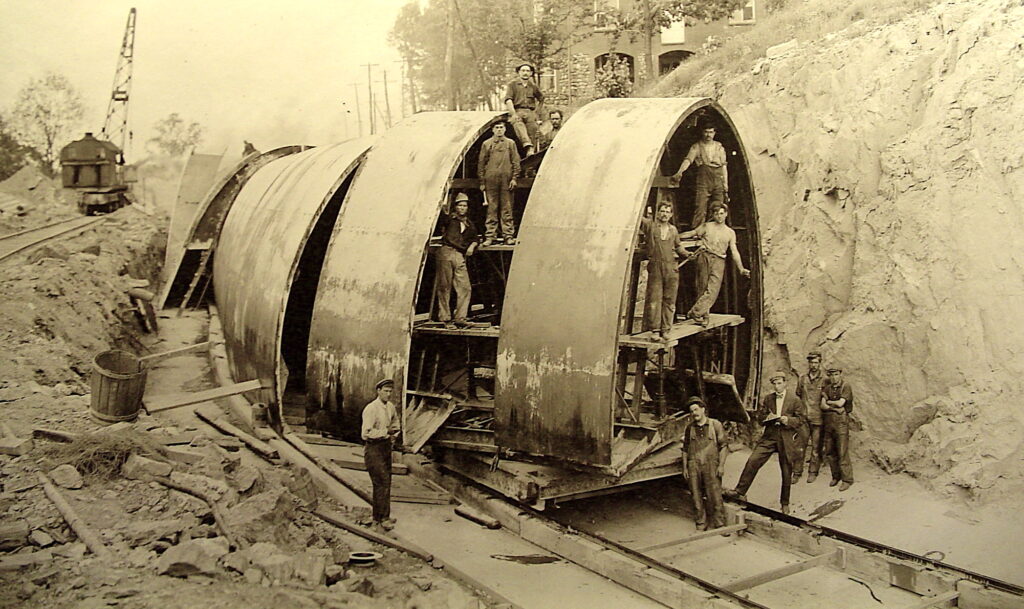
The New Croton Dam was the largest dam in the world when it was completed in 1906.
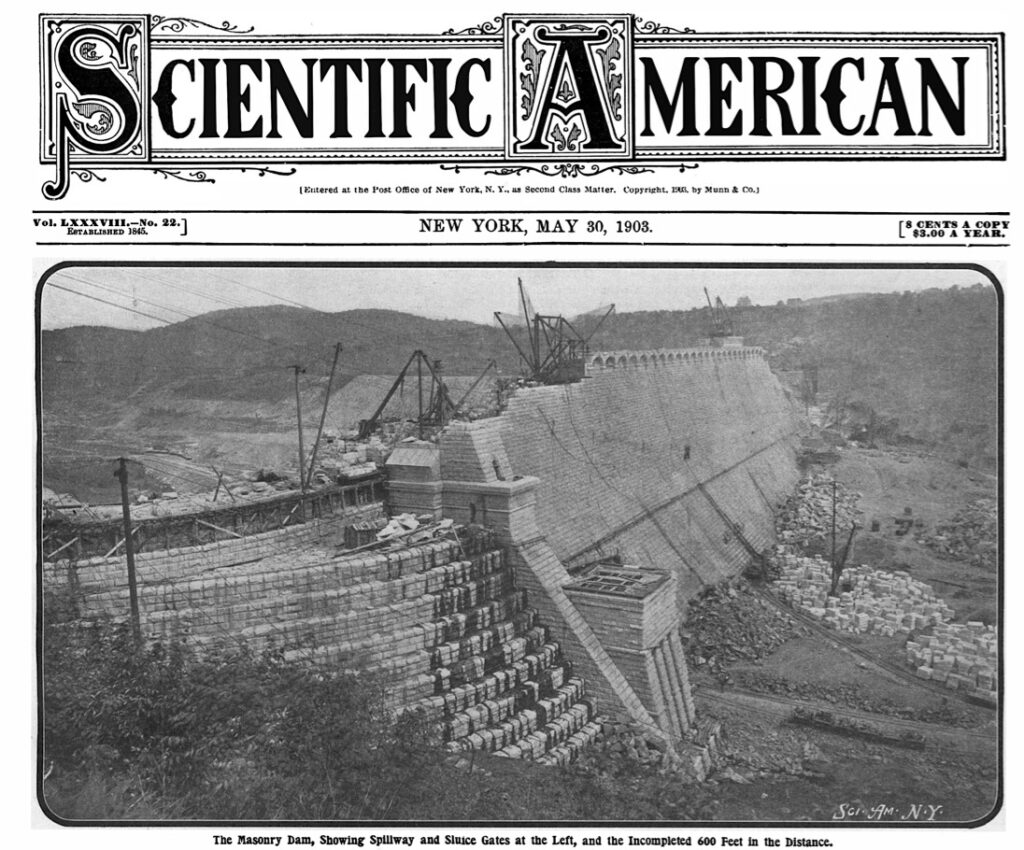
The new Croton Dam in 1912, the park side being very manicured and unforested during this time.
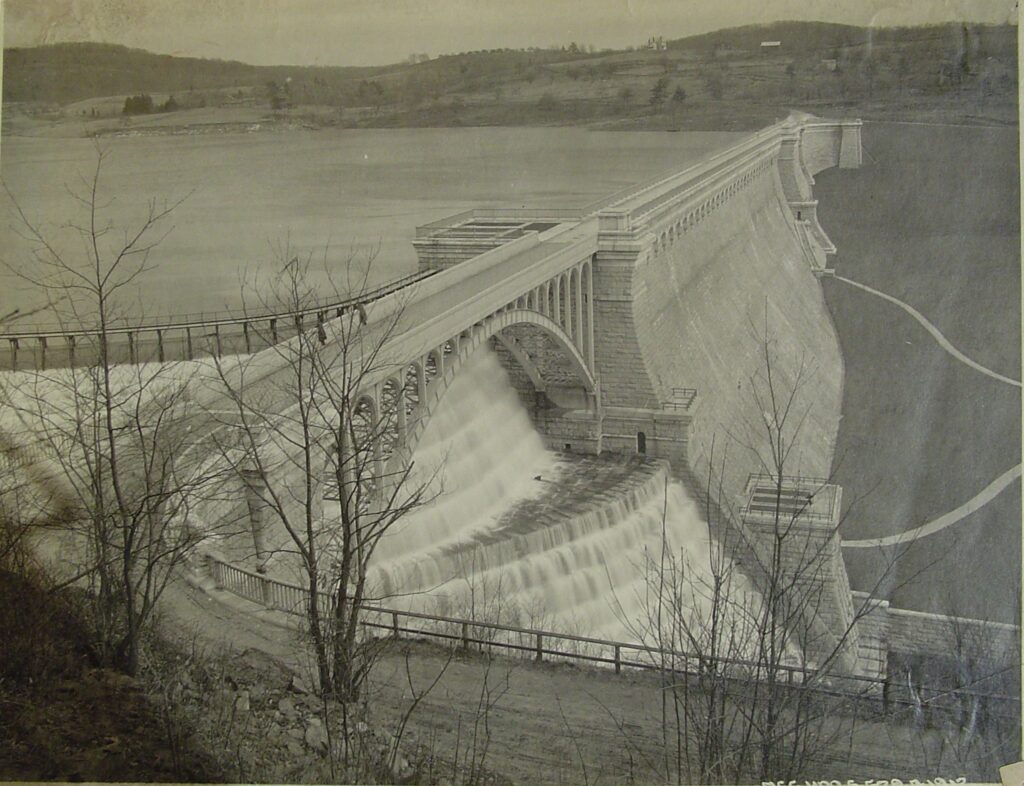
The New Croton Dam, filmed right after we recorded the show.
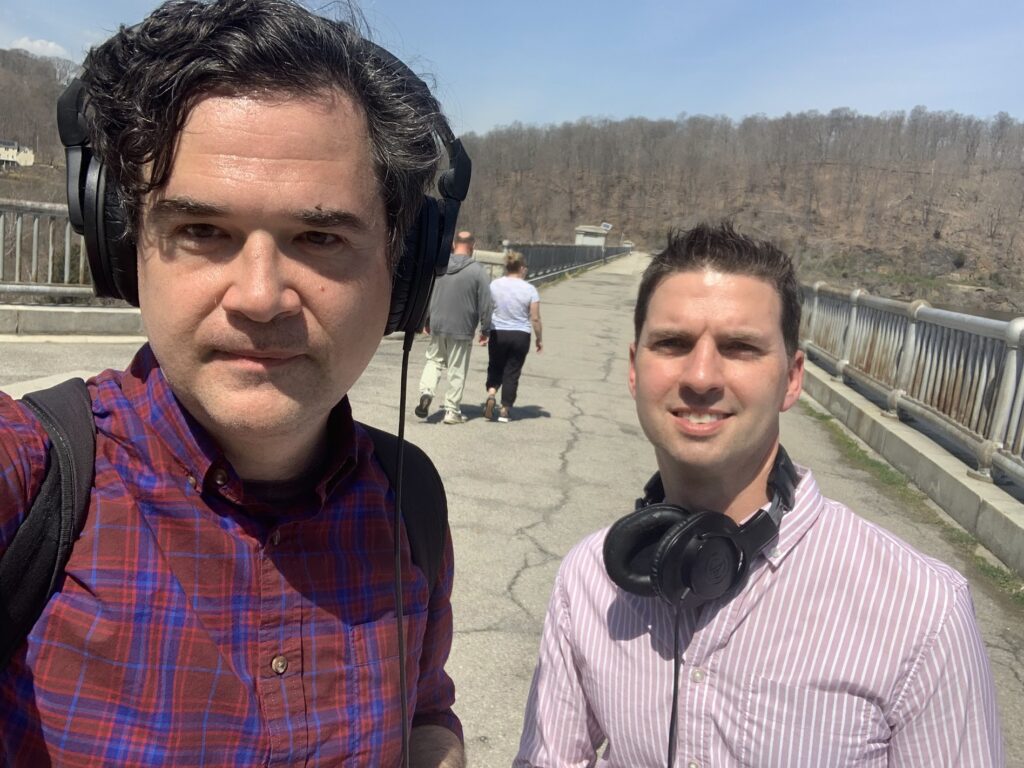
At the Double Arch Bridge in Ossining, NY.
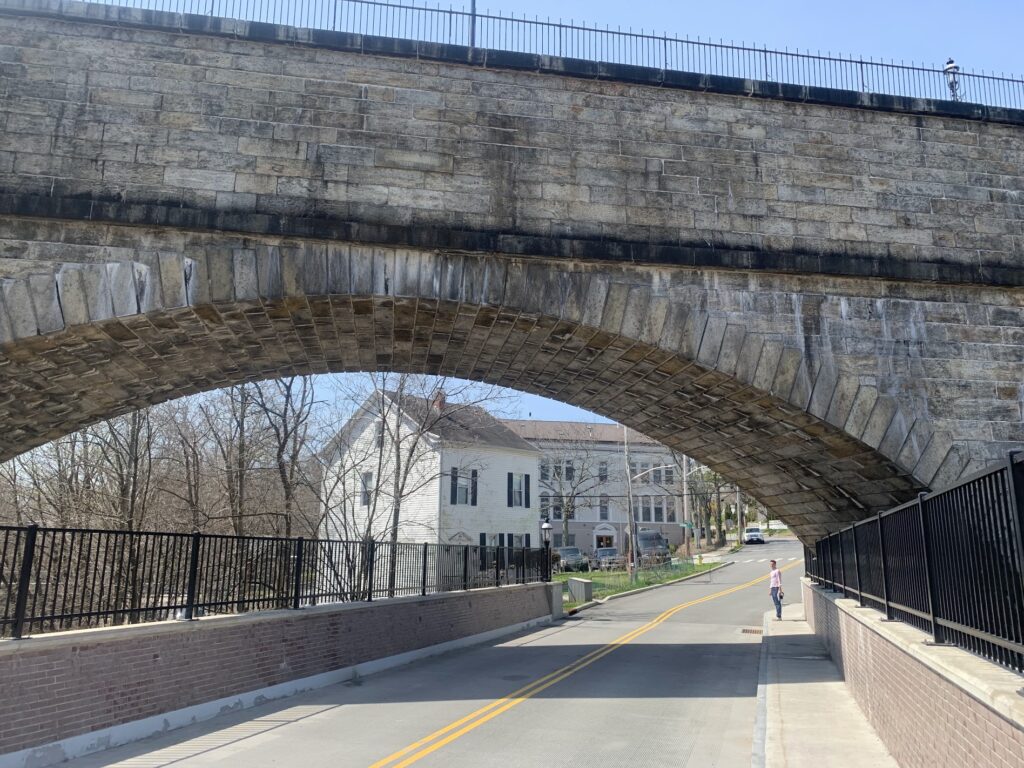
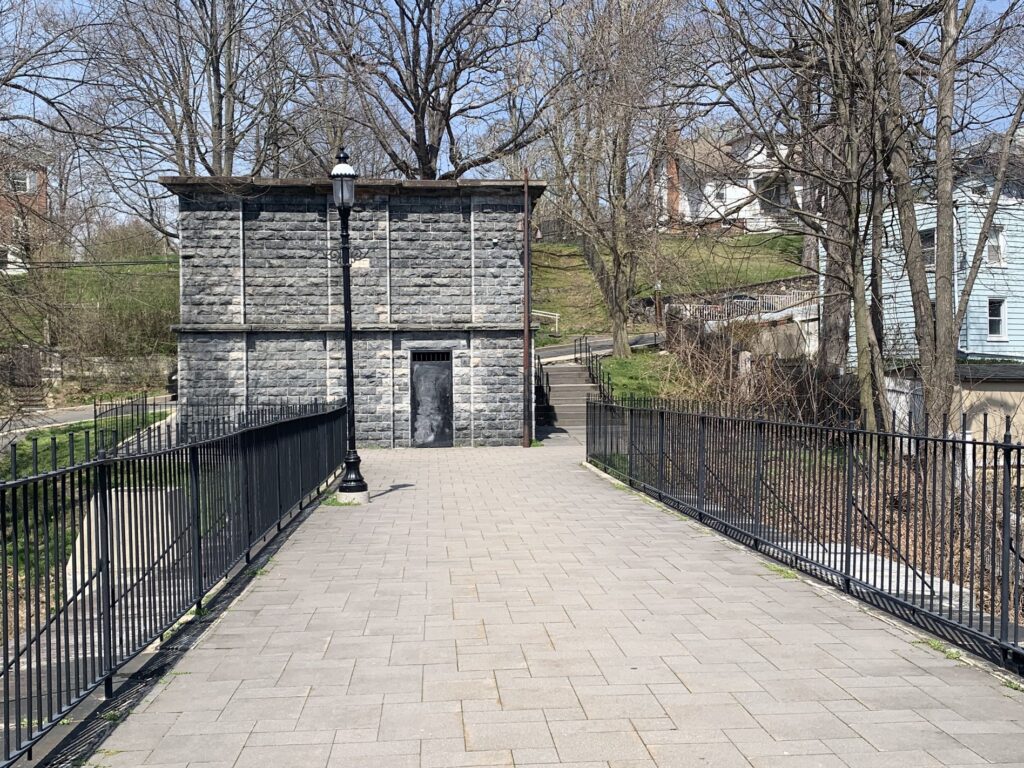
The trail running next to the Keeper’s House in Dobbs Ferry, NY.
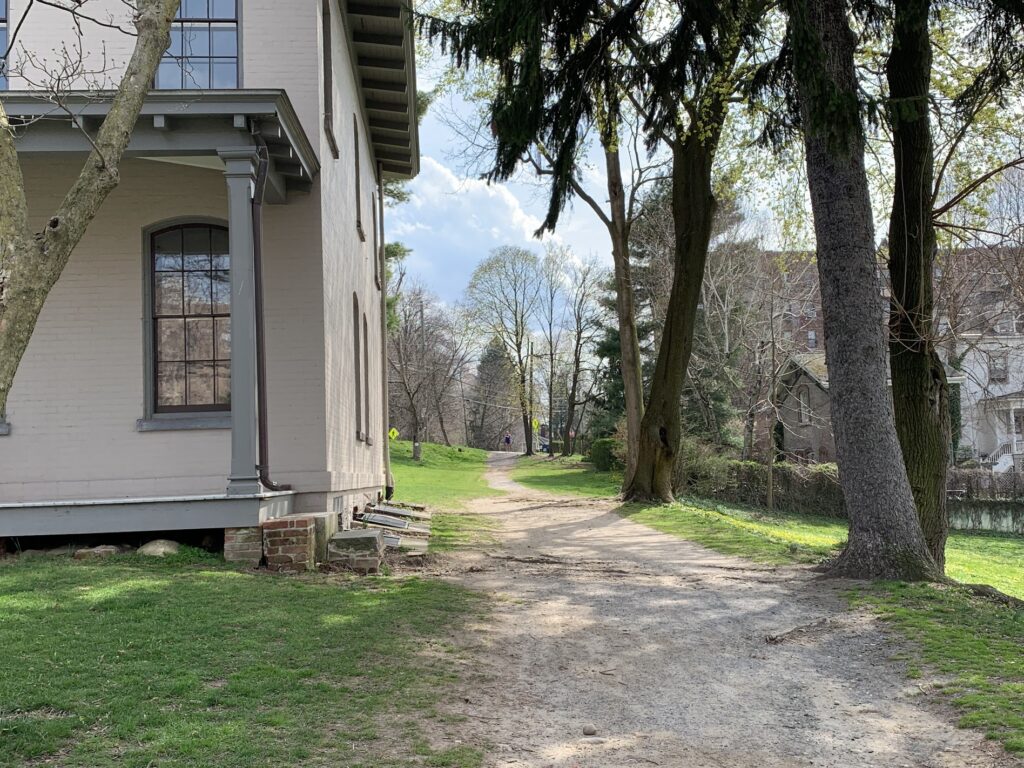
Come visit their permanent exhibition at the Keeper’s House!
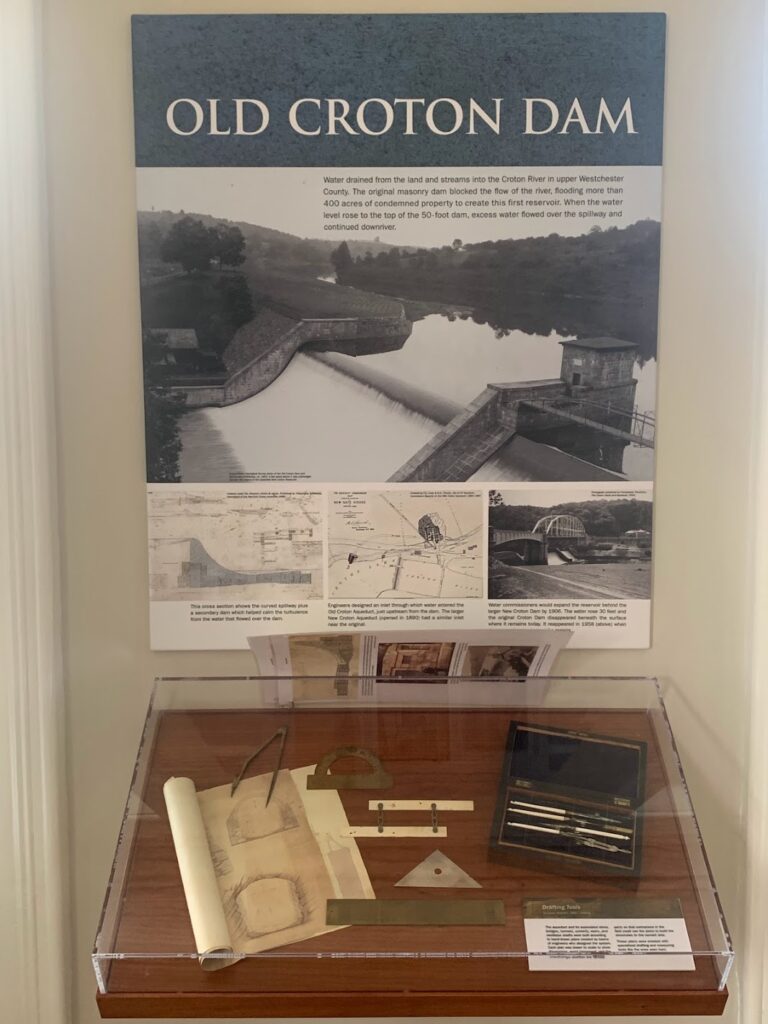
Images from Greg’s meandering stroll along the Old Croton Aqueduct — from Sleepy Hollow to Yonkers:
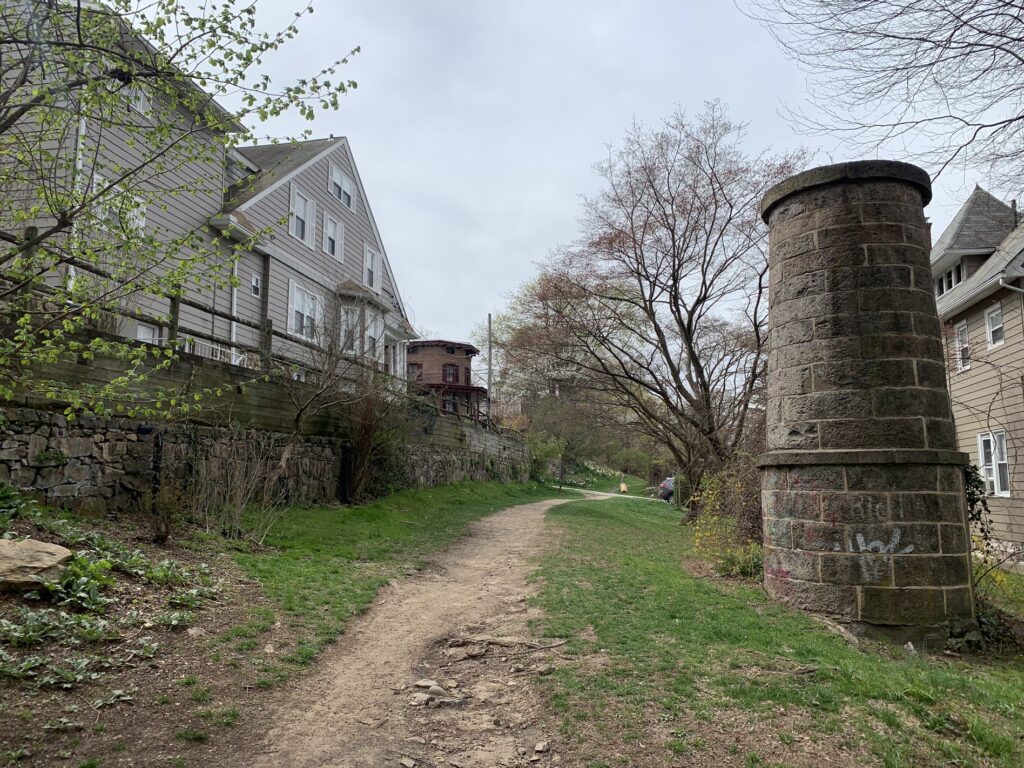
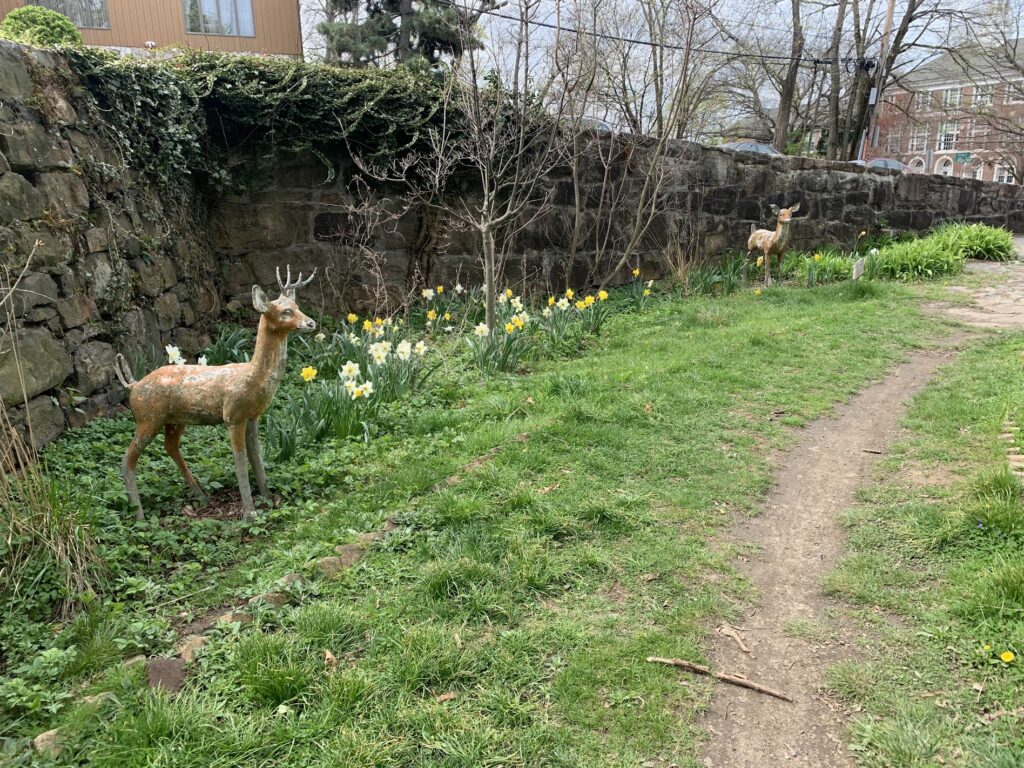
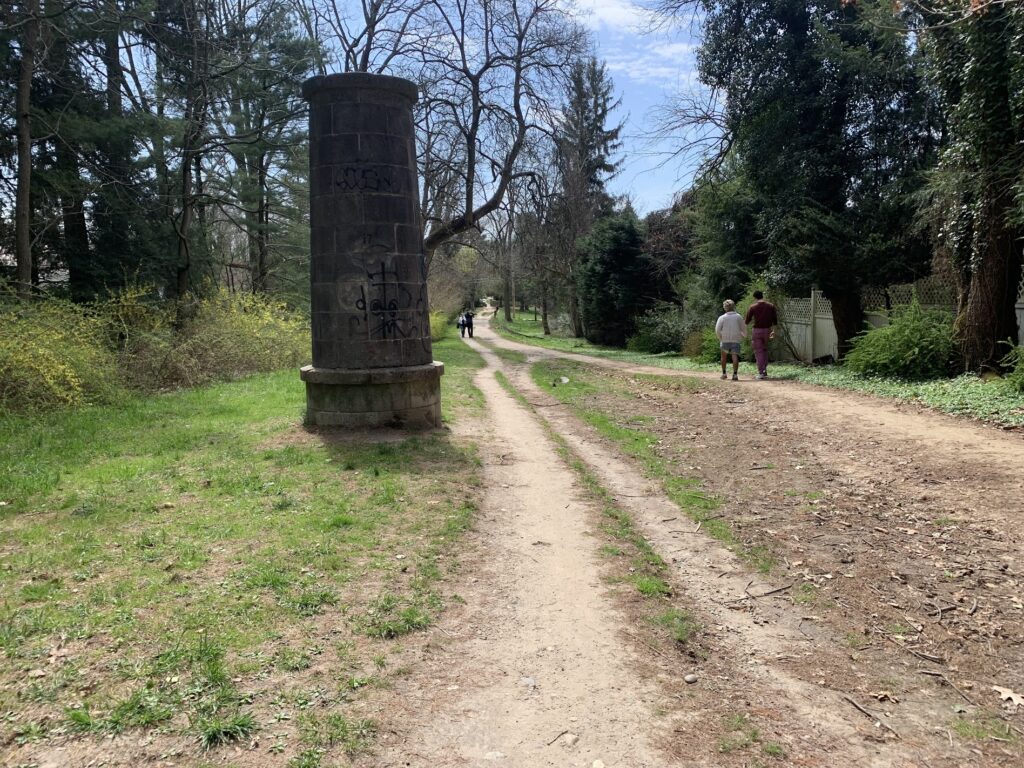
The trail cuts straight through the estate of Lyndhurst, the former mansion of Jay Gould….
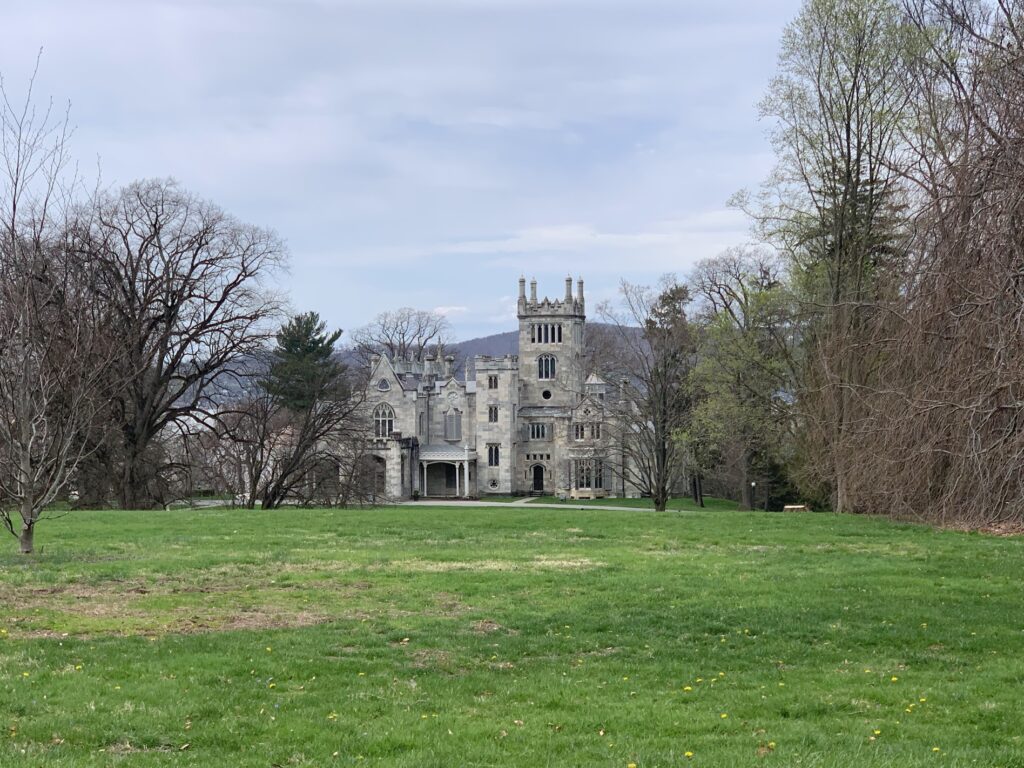
…and you also pass the stunning home of Madam C.J. Walker Villa Lewaro.
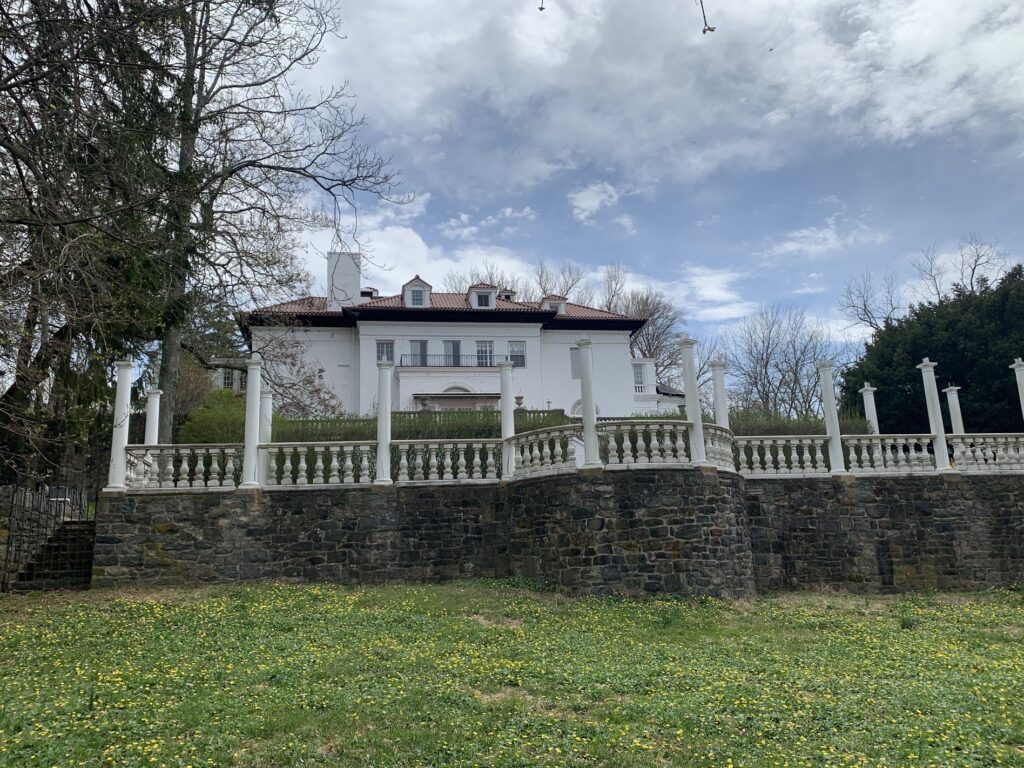
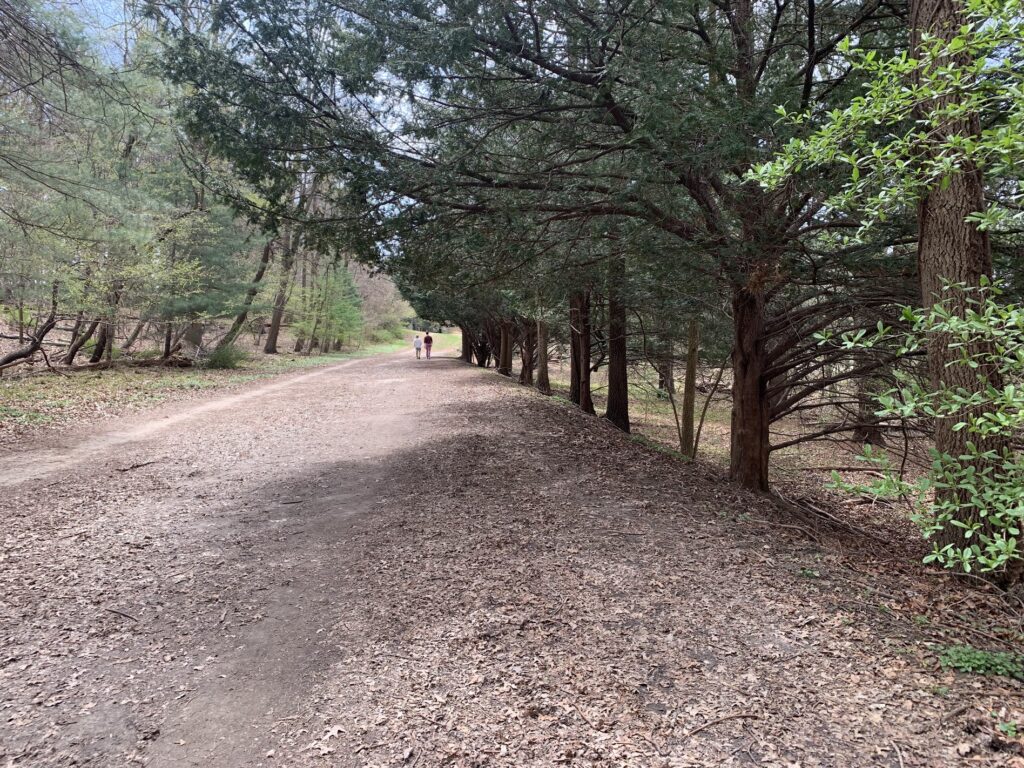
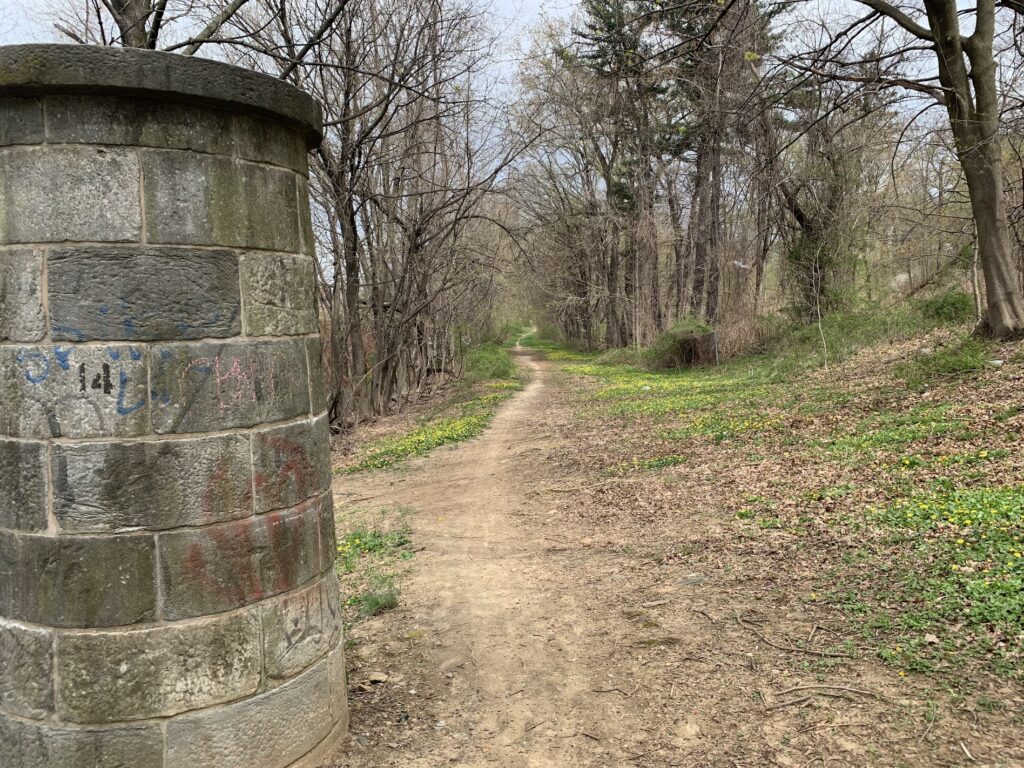
The Armour-Stiner House, aka the “octagon house.” You pass by dozens — even hundreds — of fabulous historic houses during your walk along the trail.
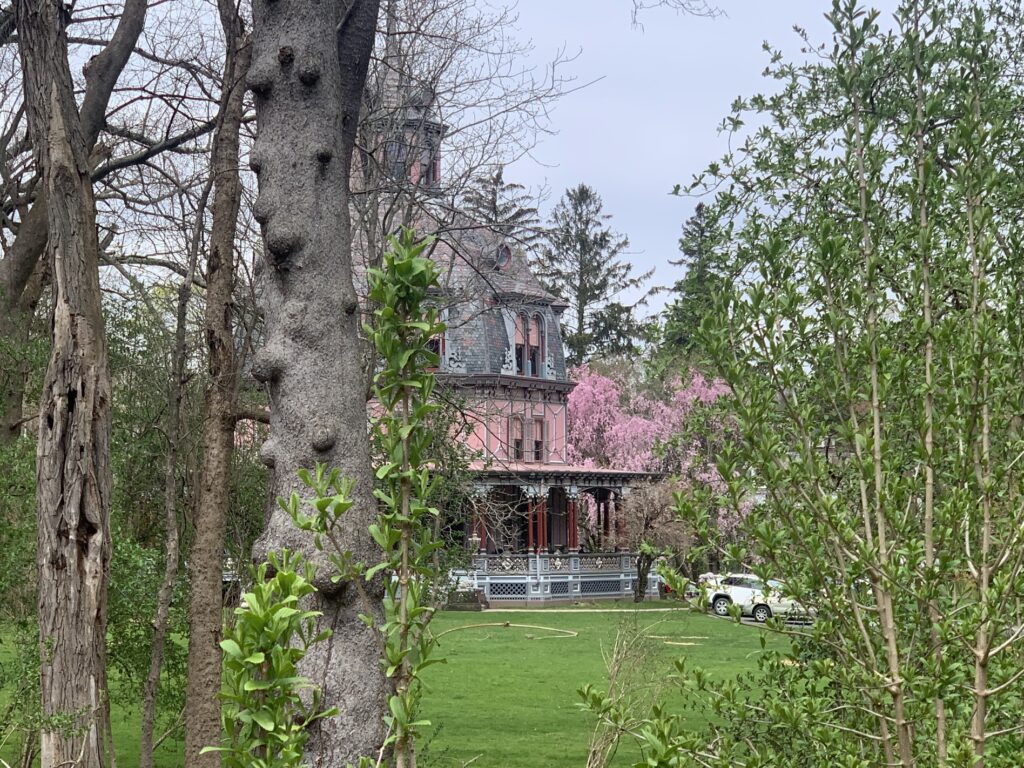
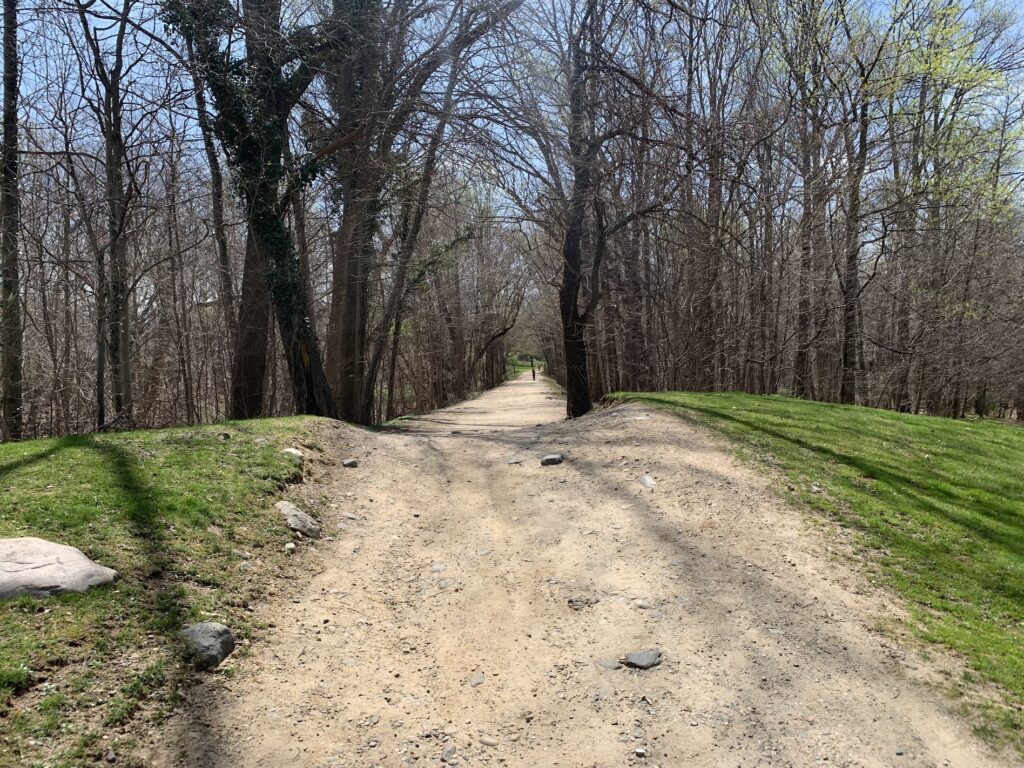
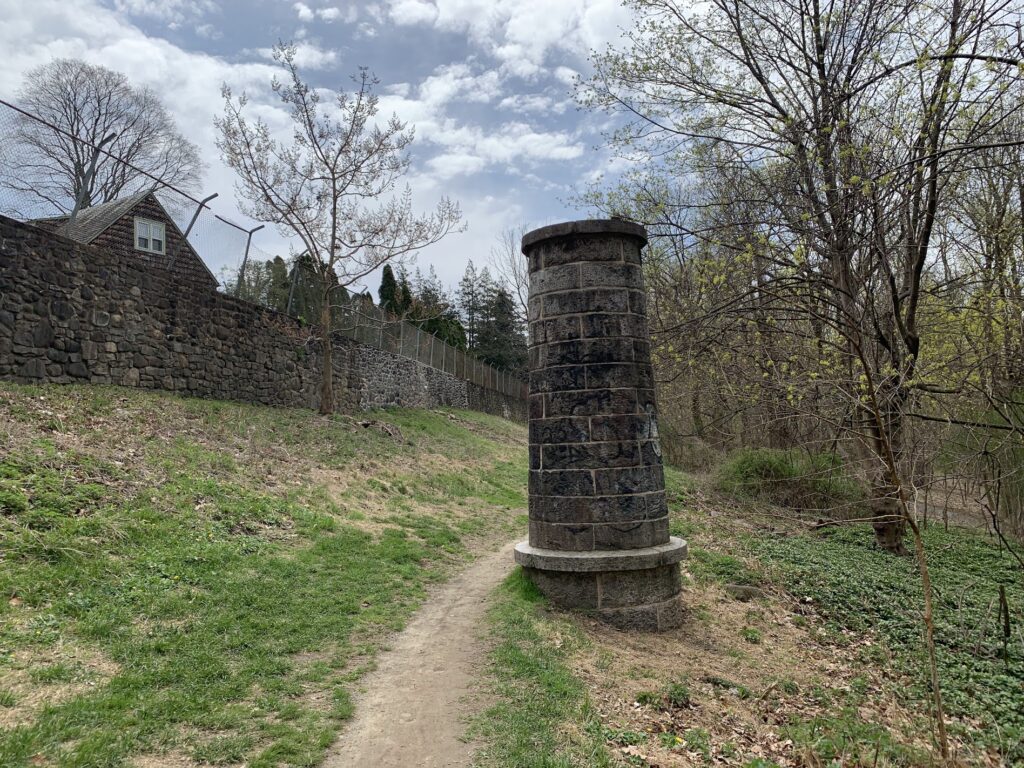
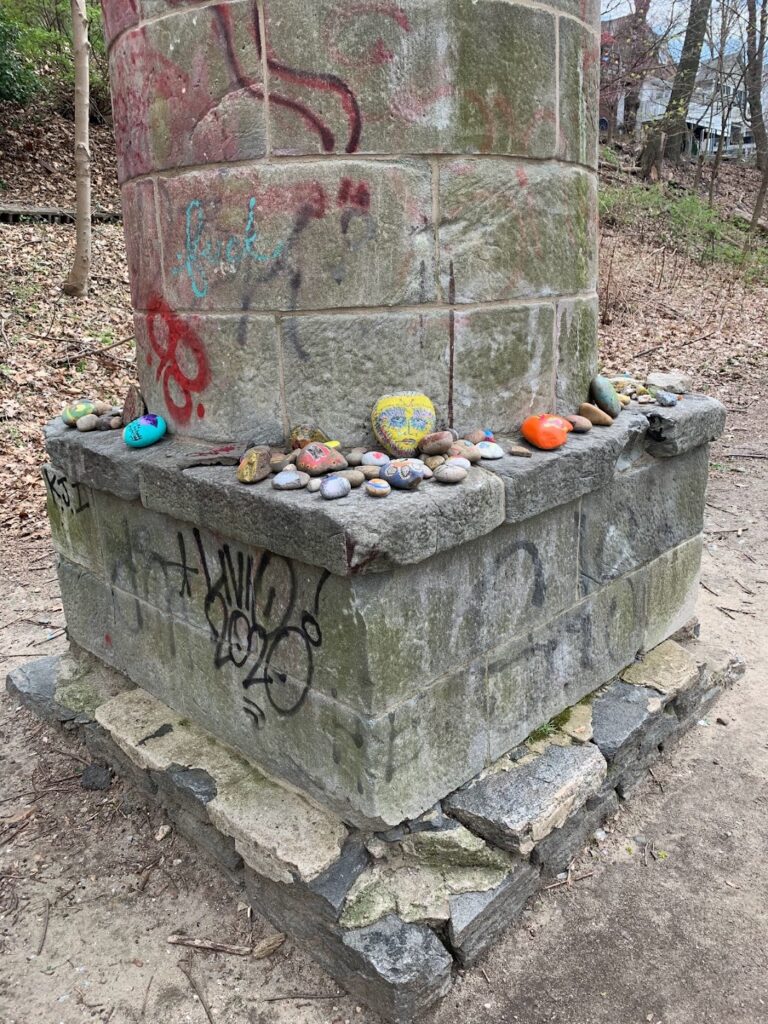
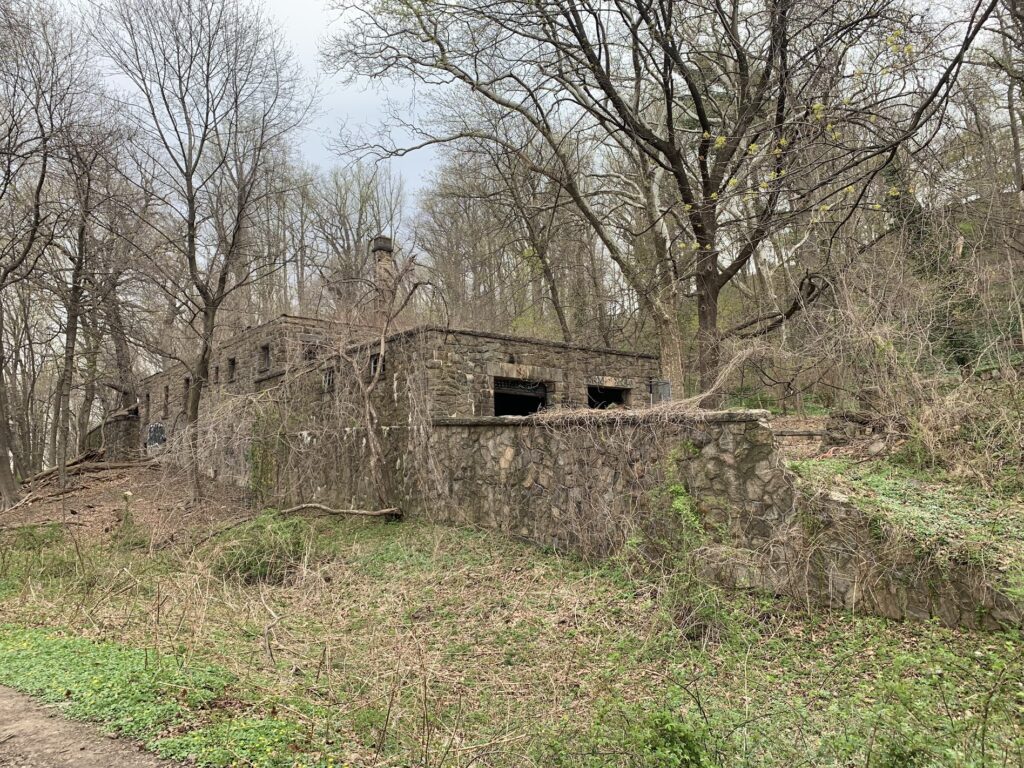
FURTHER LISTENING
After listening to this week’s show on the Old Croton Aqueduct Trail, dive back into these older episodes featuring Westchester County and the Hudson River. Start with this 2012 episode on the Croton Aqueduct.
New Yorkers didn’t just use water from the Croton River; they also often used ice from the Hudson River.
The story of Washington Irving and The Legend of Sleepy Hollow
The story of Henry Hudson’s journey into the area
Bridging the Hudson River: How they built the George Washington Bridge
The Bowery Boys: New York City History podcast is brought to you …. by you!
We are producing a new Bowery Boys podcast every other week. We’re also looking to improve and expand the show in other ways — publishing, social media, live events and other forms of media. But we can only do this with your help!
We are now a creator on Patreon, a patronage platform where you can support your favorite content creators.
Please visit our page on Patreon and watch a short video of us recording the show and talking about our expansion plans. If you’d like to help out, there are several different pledge levels. Check them out and consider being a sponsor.
We greatly appreciate our listeners and readers and thank you for joining us on this journey so far

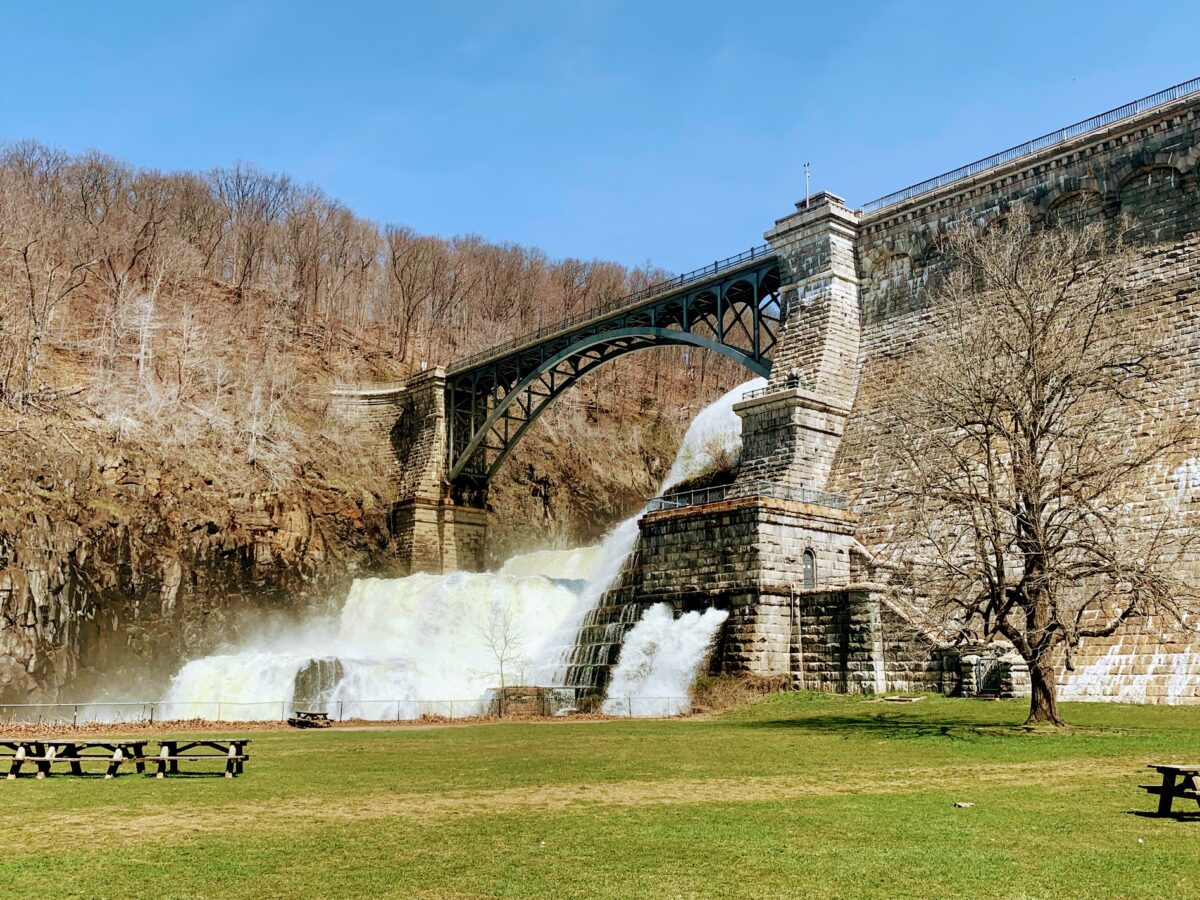
5 replies on “On the Trail of the Old Croton Aqueduct: Walking Along an Engineering Marvel”
I just listened to your very professionally produced Croton Aqueduct segment. You do a beautiful job on your podcast. It is obvious that you took the time and did the necessary research to understand the subject. You know how to edit as well. Thanks for leaving out my stumbles on the audio interview. My co-members of Friends of the Aqueduct are already letting me know how much they enjoyed it. Regards, Tom Tarnowsky
Thank you for being on the show Tom!
I grew up a mile from the New Croton Dam, and when I saw you had done an episode on the Croton water system, I cringed in anticipation of something superficial in which the city boys would play loose with the facts and look down their noses at the suburbs. Let me thank you for having done a fantastic job that put the lie to all my apprehensions.
A few points to note in addition to what you related:
• The New Croton Dam’s structure extends as far below ground as you can see above ground. Once the world’s tallest dam, it remains the world’s largest hand-hewn masonry dam (as opposed to concrete pours like Hoover, etc.). It is reputed and oft-repeated, though I can’t find a real source, that it remains the third-largest hand-hewn structure in the world, behind only the Great Pyramid of Giza and the Great Wall of China.
• The immigrant masons who built the dam, many of whom came from Italy for the purpose, left their mark in many Croton family names that remain fixtures in the village today.
• There were many home and farm sites flooded by the expanded New Croton Reservoir, including the entire town of Katonah, where many houses were moved uphill on log rollers to new foundations.
• That big hill on the south side of Croton Gorge Park, up against the dam—the hill you slogged up to get to the aqueduct trail? That was THE sledding hill of our youth. If John Updike said “The true New Yorker secretly believes that people living anywhere else have to be, in some sense, kidding,” then we felt the same about anyone else’s puny excuse for a sled run.
• The road across the dam was open to vehicular traffic until the city closed it in a paroxysm of post-9/11 security theater. You can still walk across it, as you guys did.
• One quirk of growing up in the area, with the dam and the reservoir among our playgrounds, was that the New York City Department of Environmental Protection policed the reservoir and related facilities. That meant the typical low-grade run-ins between cops and teens—“Hey, get out of there”… “You can’t be there…” “We pulled you over because, uh, (we were bored)”… involved New York City cops even though we were in our own town 30 miles away from the city. You can imagine the indignation that might cause.
• Whenever a news story has to do with New York’s water system, the B-roll footage they use is of the Croton Dam’s boring little cousin to the south, the Kensico Dam. Why? Because it’s a shorter drive from the city and easier for TV crews to find. Bravo to you guys for visiting the real deal.
• A local author whose family I know, Josephine D’Alvia, wrote a solid history of the dam: https://www.amazon.com/History-New-Croton-Dam/dp/B001MXSZMO.
Amazing! Thanks for commenting. In particular I’m imagining how fun it would be to sled that REALLY steep hill.
Greatly enjoyed this podcast! It was a bit of a trip down memory lane, as my husband & I lived on the top floor of an old house in Dobbs Ferry just after we were married, in the early 90s. The Aqueduct Trail & Keeper’s House were right behind our house and we often walked there. We hoped the Keeper’s House would be restored some day – so glad to see it has been. My parents also loved walking the trail up to Lyndhurst. It’s a great asset to the area.